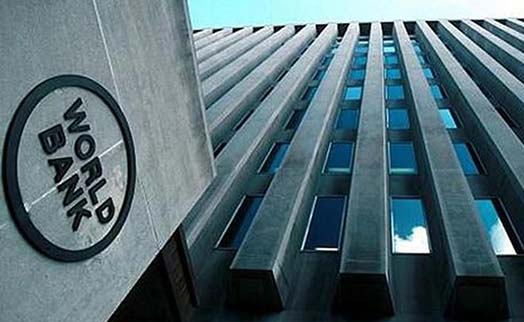YEREVAN, April 11, /ARKA/. After a prolonged period of low inflation, price levels picked up in Armenia in late 2020 and remained elevated in 2021, the World Bank says in the Europe and Central Asia Economic Update, Spring 2022 report.
It says inflation peaked at 9.6 percent yoy in November before moderating to 6.5 percent yoy in February 2022.
Food inflation peaked at 17 percent in November 2021, driving two-thirds of overall inflation. In response, the Central Bank of Armenia (CBA) increased the policy rate nine times by a cumulative 500 basis points between December 2020 and March 2022. The budget deficit declined from 5.1 percent of GDP in 2020 to 4.3 percent in 2021.
Revenues were up 8 percent yoy due to higher VAT and state duties, following the introduction of a new export duty for minerals. Expenditure was up 5 percent yoy driven by current expenditures. Public debt to GDP declined to 63.4 percent as at end-2021 from 67.4 percent a year earlier.
The external balance improved due to a quicker rebound in exports than imports, and a sharp increase in remittances. FDI also rebounded, albeit from a low base. The exchange rate stabilized following the decline in political uncertainty in mid-2021 and reached pre-COVID levels in February 2022.
However, the onset of the war in Ukraine brought fresh volatility. The national absolute poverty rate rose to 27 percent in 2020 from 26.4 percent in 2019. Existing social protection and social assistance mechanisms (pensions and the Family Benefits Program) provided a critical buffer preventing a further increase in poverty.
According to the World Bank, the impact of Russia’s invasion of Ukraine on Armenia’s economy is likely to be significantly negative, although the magnitude remains uncertain. Armenia has strong economic links with Russia, which accounted for 28 percent of Armenia’s exports and 30 percent of its imports on average from 2018-2021 and is the source of all of Armenia’s wheat and gas imports. In 2021, remittances from Russia amounted to 5 percent of GDP, 41 percent of net FDI stock was associated with Russian entities, and Russian tourists accounted for 40 percent of all tourist arrivals.
In addition, Armenia will also be impacted by elevated global food and fuel prices, with fuel imports accounting for 9 percent of imports in 2021. -0-








